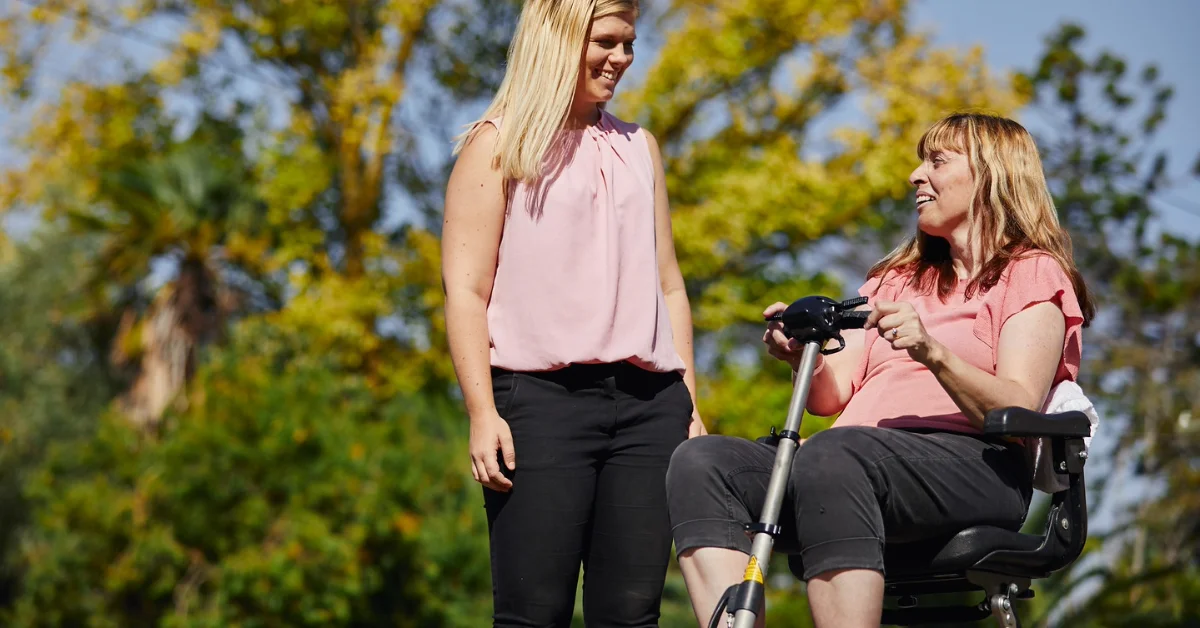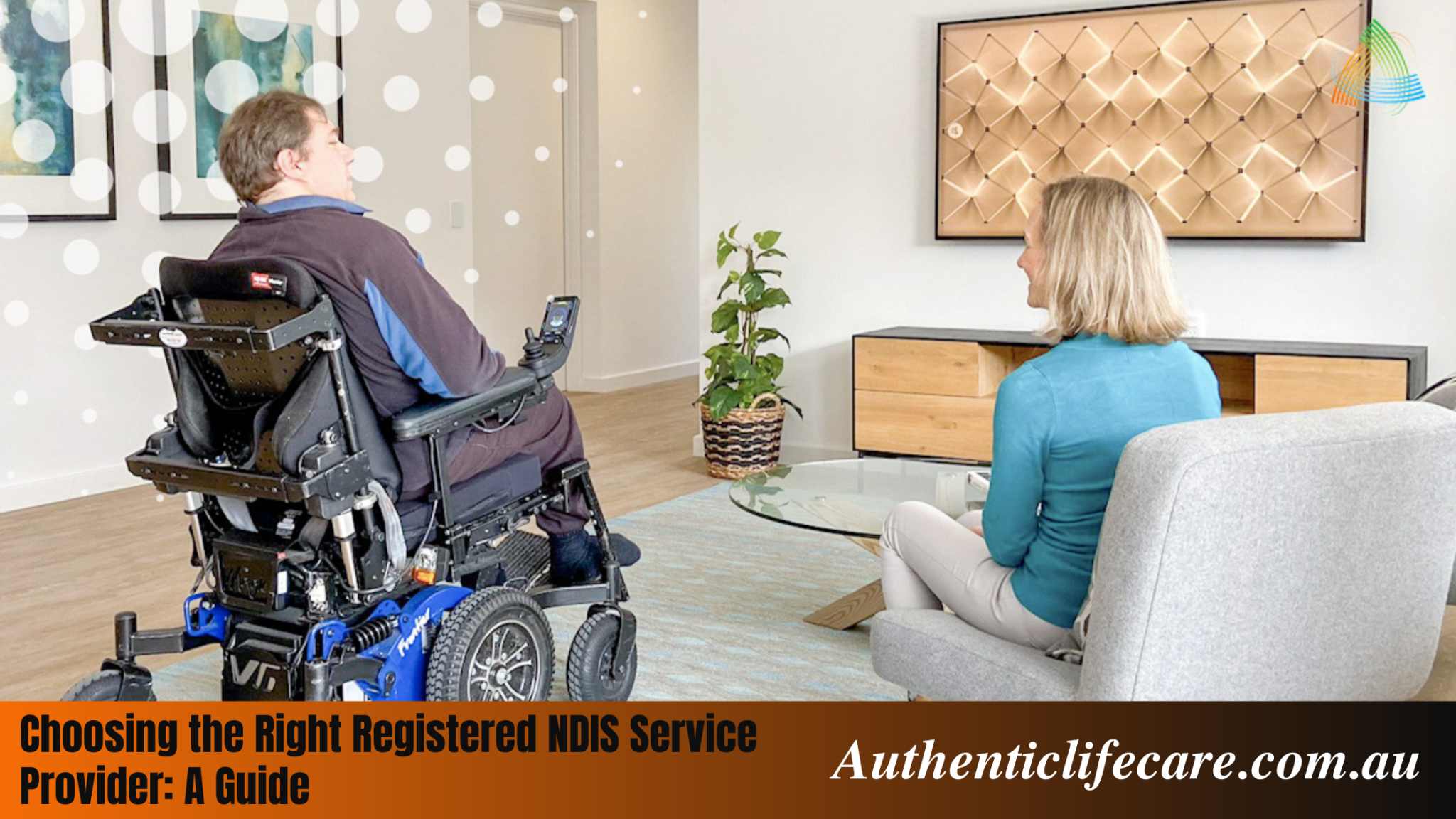NDIS assistive technology is an essential part of the lives of people with disability across Australia. The National Disability Insurance Scheme (NDIS) provides funding for a wide variety of assistive technology devices to support your day-to-day activities, communication, mobility, and safety. These devices and systems are designed to empower participants, making them more independent and improving their overall quality of life. With the right NDIS assistive technology, people can be more actively involved in work, social activities, education and community life.
NDIS What is Assistive Technology?
NDIS assistive technology refers to devices equipment or software that people with disabilities can use to help them carry out tasks that they may have trouble doing or be unable to do These technologies range from simple assistive devices such as grab rails and mobility scooters to more complex devices such as speech generating devices and smart home automations The NDIS understands that each participant has an individual set of needs, and assistive technology is designed to help them meet those needs effectively.
Types of Assistive Technology Sophrology by NDIS
The NDIS funds different types of assistive technology to meet participants’ diverse needs. These include:
- Daily Living Aides: Tools such as adaptive cutlery and dressing aids, or even modifications to the shower or clothes-washing area, help participants take care of daily activities on their own.
- Mobility Devices: Wheelchairs, walkers, scooters, and orthotics provide greater physical mobility and access to community spaces.
- Communication Devices: Speech-observing devices, communication apps, and hearing aids support those with a voice or hearing disability.
- Environmental Controls: Automated controls such as smart home technology, automated lights, doorkeepers and temperature controls mean that participants can have control of their environment without any hassle.
- Safety and Monitoring Devices: Fall detectors, GPS trackers, and emergency alert systems help maintain the safety and peace of mind of participants and caregivers.
By investing in these technologies, the NDIS ensures participants can lead independent and fulfilling lives and stay connected to their communities.
How NDIS Assistive Technology is Helping to Be Independent
Independence is one of the primary goals of using the NDIS, and assistive technology is one of the best tools to achieve it. For many participants, simple tasks such as cooking, dressing or moving around the house can be complex. NDIS assistive technology eliminates these barriers and helps individuals perform their everyday routines with relatively little assistance.
For example, a participant who uses a powered wheelchair cannot only move around community facilities but also go to school or work without constantly being dependent on others. Similarly, a participant with limited mobility in their hands can use adaptive tools for making meals or personal care. The right technology not only increases independence but also builds confidence and self-esteem.
Improving Education and Employment Opportunities
The role of NDIS assistive technology in education and employment is also very much a part of it. Devices such as communication aids, screen readers and ergonomic work stations can enable participants to participate fully in classrooms or workplaces. For students, technology can assist them with reading, writing and communication so that they can achieve educational goals. In employment systems, assistive devices help overcome hindrances to work effectiveness and enable participants to contribute to production effectively with their colleagues.
By facilitating access to education and work, NDIS assistive technology helps to promote inclusion, self-reliance and economic participation for people with disabilities.
NDIS Funding and Accessing NDIS Assistive Technology
Participants are provided with access to NDIS assistive technology funding via their NDIS plan. The journey generally follows the following steps:
- Assessment of Needs: The needs of the participant are evaluated by a qualified occupational therapist or health care professional who also makes recommendations for appropriate assistive technology.
- NDIS Plan Inclusion: The recommended technology is included in the participant’s NDIS plan under assistive technology funding.
- Purchase and Delivery: Once approved, participants are able to purchase their devices from NDIS-registered suppliers of medical devices or through approved channels.
- Training and Support: Participants may be trained in how best to effectively and safely use the technology.
Funding may include the entire amount of the device, installation, maintenance and continued support depending on the individual’s needs. Participants are urged to discuss their options with their NDIS planner to ensure, as far as possible, that the plan itself is as appropriate as possible in terms of technology.
Emerging Trends of the NDIS Assistive Technology
The field of assistive technology is one that is ever-changing, and the NDIS is committed to achieving access to the latest innovations. Some things to be on the horizon include:
- Smart Home Integration: Certain devices built for home automation systems enable these individuals to control lighting, heating and appliances by verbally requesting or using voice devices.
- Wearable Technology: Wearable technology, such as smart watches, health monitors, and GPS devices, can help people track their vital signs, activity levels, and location, improving safety and well-being.
- Adaptive Communication Software: Advanced applications and software platforms allow natural and efficient means for participants to communicate, especially for those with complex speech needs.
- Robotics and AI Assistance: Robotic aids to mobility, rehabilitation or domestic tasks are increasingly available and can prove to be of great assistance to participants with high-level care needs.
One of these advancements ensures that NDIS assistive technology is improving to meet the ever-growing needs of participants to help them live everyday lives safely easily and more independently
NDIS Assistive Technology at Work Case Studies
Case 1: Enhancing Mobility
John, who had limited mobility in his legs, used to need to be supported on a full-time basis to move around his home and travel to work. Funded through the NDIS, he had obtained a powered wheelchair and changes to his house, including ramps and automatic doors. John is now independent, goes to work regularly and participates in community activities.
Case 2: Offering Triseminal Communication
Samantha’s cerebral palsy prevented her from communicating with words, as well. Through the help of the NDIS assistive technology, she was provided with a speech-generating device and tablet software, depending on her needs. This technology helped Samantha communicate effectively with family, friends and educators with great improvement in her social and educational participation.
Case 3: Improving Daily Living
Alex is a participant with limited hand function and has used adaptive cutlery dressing aids and smart home devices funded by the NDIS. These tools helped him take care of personal care and household work and reduced dependency on caregivers, as well as improved his confidence.
These are some examples of the life-changing impact that NDIS assistive technology has provided in aiming to help service users to enjoy independence, inclusion and quality of life, and to help make their lives easier.
Choosing the Right NDIS Assistive Technology
Selecting the right technology is critical to making sure the technology fits the needs of the participant. Considerations include:
- Individual Needs: Participant needs must be considered, including disability environment and lifestyle, in selecting technology
- Ease of Use: Devices should be intuitive and accessible so participants can use them confidently and safely
- Durability and Reliability: Quality and robust devices guarantee long-term usability and reduce maintenance issues.
- Training and Support: Good training and continuous support of suppliers/healthcare professionals increases effectiveness.
Working closely with occupational therapists in developing equipment, NDIS planners and assistive technology professionals can ensure that participants will get devices that will actually contribute to their independence and participation.
The Social and Emotional Benefits of NDIS
In addition to the more practical benefits of the NDIS assistive technology, there are some very social and emotional benefits. Participants become confident and independent, and develop a sense of autonomy. They are more able to participate in social activities, maintain relationships and participate fully in the life of their community. Caregivers benefit, too, since they are able to have reduced stress levels, and are also more able to feel relaxed as well as more reassured that their loved ones are safe and helped.
Technology can also support mental well-being as it helps participants pursue hobbies, education or employment. This effect shows why NDIS assistive technology is critical to assist not only physically, but also in creating overall well-being.
Future Directions
The NDIS continues its commitment to assistive technology support to ensure innovative solutions that are more accessible and affordable. Some of the directions for future work can be:
- More availability of smart devices and intelligent tools.
- Integration of virtual reality in rehabilitation and skills development
- Increased attention to user-centred design to make devices meet the unique needs of the participants.
- Simplified Processes to Access Funding and Support
With ever-evolving technology, the future for participants can be more personalised, efficient, and effective in advancing independence and inclusion.
Summary
NDIS assistive technology is a powerful enabler for people who are living with a disability. By supporting people with disability to access their mobility aids, communication devices, smart home devices, and other innovative tools, the NDIS is enabling people with disability to live more independent, fulfilling and connected lives. The right assistive technology has the power to alter disparate daily routines, educational choices, jobs available and the ability to socialise.
Through warranted evaluation, custom solutions and ongoing support, NDIS assistive technology is ensuring their participants are in the right place to overcome barriers, take advantage of opportunities, and achieve their personal goals. As technology has changed, the NDIS is keeping up with, and continues to broaden, what they offer, demonstrating their commitment to inclusion, independence and quality of life for all Australians living with disability.
With the help of NDIS assistive technology, its future is to be lived by people with disability to get involved in society without worry, and be sure that they can live by themselves and have all their dreams.












